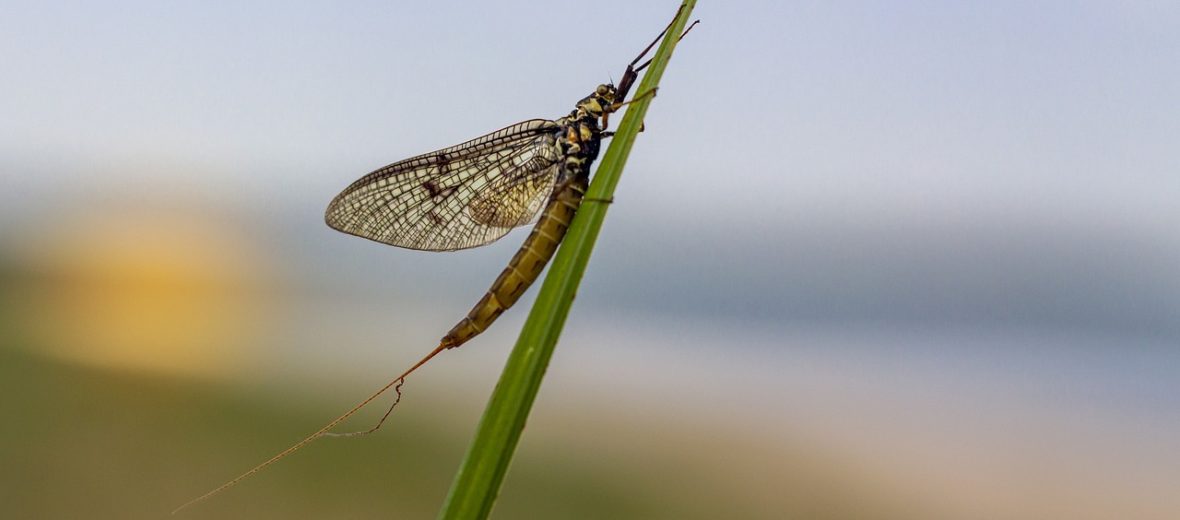
The mayfly, aka Canadian Soldier, fishfly, shadfly, up-winged fly, or salmon fly, has been around for about 350 million years! They spend most of their lives in the water as a larvae. These ancient insects can be found all over the world, sans Antarctica and the Arctic. They can be located under rocks, around decaying plants, and sediments in and near ponds, rivers, streams, and lakes. Their primary threats are habitat loss, water pollution, and climate change. Due to their abundance, they are listed as Least Concern by the IUCN.
First the Stats…
Scientific name: Ephemeroptera
Length: Up to 1.1 inches
Lifespan: Up to 2 years, most of which is spent in the larval stage
Now on to the Facts!
1.) There are 3,000 known species of mayfly in the world today.
2.) Males and females have 2 pairs of genitals. Females have 2 openings called gonopores and males have 2 penis-like proboscises called aedeagi.
3.) They have been around since before the dinosaurs. A testament to their durability. They even survived the K-T extinction event.
4.) In the larval stage they go through about 20 instars (molts).
5.) While in the nymphal stage they consume plants and decaying animal matter.
But wait, there’s more on the mayfly!
6.) During the adult phase they do not eat or even bite, as they have no functional mouth at all.
7.) Various fish, frogs, newts, dragonfly larvae, and birds all prey on mayflies.
Did you know…?
1 of the shortest lifespans of nearly any known insect is the adult Dolania americana (American mayfly). They live for a whopping 5 minutes!
8.) Females lay up to 3,000 eggs that sink to the bottom of the bodies of water in which they were laid. They then hatch about 1.5 months later.
9.) Copulation (mating) lasts for only a few seconds, then the males die. The females then deposit their eggs in the water and they too die.
10.) In 2014, during a mass mayfly bloom over the Mississippi river in the United States, the plume of mayflies was so great that their signature could be detected by weather radar, from space. The cloud looked like a sever weather system.
Now a Short Mayfly Video!
Also, check out the Critter Science YouTube channel. Videos added frequently!
Want to suggest a critter for me to write about? Let me know here.



